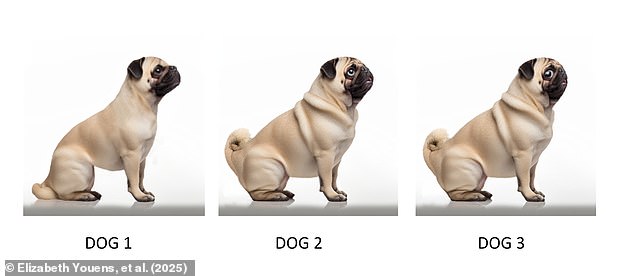
Vets Reveal Shifting Dog Breed Preferences—Test Your Cute Canine Picks Now!
Britain’s Dog Preferences Shift Toward Healthier Breeds, Study Finds
(Include image: Three pug variations with captions: "Which pug do you find most attractive? Participants favored less extreme features.")
New research from the Royal Veterinary College reveals a shift in British preferences toward dogs with longer muzzles, smaller eyes, and natural tails—moving away from flat-faced, short-limbed breeds like Pugs and French Bulldogs. The study, involving nearly 500 participants, suggests a growing awareness of health risks tied to "extreme" breeding.
Key Findings
Participants rated AI-generated images of Pugs, English Bulldogs, and French Bulldogs in three categories: "less extreme," "typical," and "super extreme." The least extreme versions—with longer snouts, fewer wrinkles, and non-curled tails—ranked highest for attractiveness, health, and ethical breeding. Even owners of flat-faced dogs preferred these healthier traits.
Dr. Rowena Packer, study author, noted: "This signals a potential turning point. For years, media normalized extreme features, but public sentiment now aligns with welfare needs."
(Include image: French Bulldog variations with caption: "Owners favored longer muzzles and natural tails, even among flat-faced breeds.")
Health Risks of Extreme Breeding
Brachycephalic (flat-faced) breeds are prone to breathing difficulties, spinal disorders, and skin infections due to their physical traits. Shortened airways and compressed skulls often lead to surgeries and chronic pain. Campaigners have long criticized breeding practices that prioritize looks over health.
(Include image: English Bulldog variations with caption: "Which Bulldog looks healthiest? Longer muzzles and less wrinkling scored highest.")
Mixed Trends in Popularity
While Kennel Club registrations for flat-faced breeds are declining, French Bulldogs remain the UK’s most popular puppy. Dr. Paul Manktelow of Blue Cross warns: "We see daily how extreme features cause suffering. This study offers hope for change."
Owner Bias and Breeder Resistance
Owners of brachycephalic dogs were more forgiving of extreme traits, often perceiving their pets’ health issues as "normal." Earlier studies found many owners dismiss risks, valuing perceived "laziness" (often a sign of breathing troubles) as endearing. Breeders also resist altering traditional standards, leaving buyers with limited options.
(Include image: Comparison chart with caption: "Less extreme dogs rated healthier and more ethical to breed.")
A Path Forward
Dr. Packer advocates for stricter breeding standards, similar to the Netherlands, which enforces limits on physical extremes. "Prioritizing ethics over aesthetics is key to healthier dogs," she says.
As public preferences align with welfare needs, the hope is for a future where beloved breeds thrive—not just survive.
Word count: ~600
(Note: Image placeholders and captions are based on original article visuals for context.)


